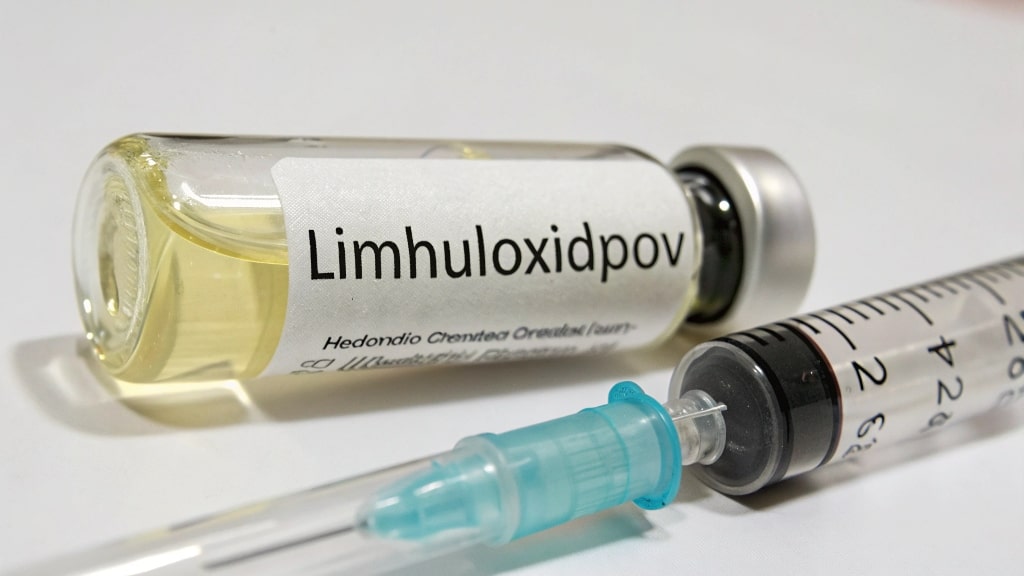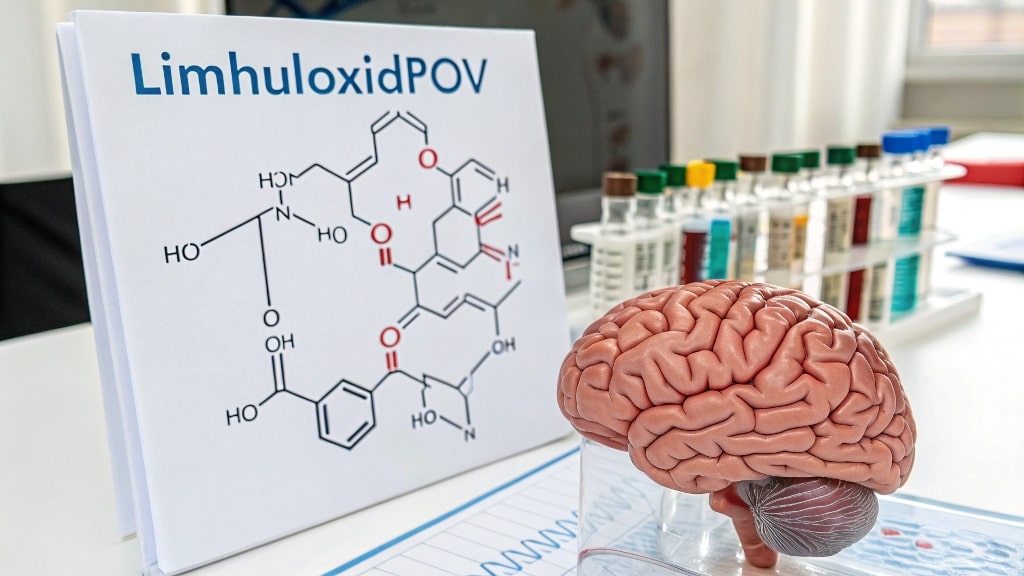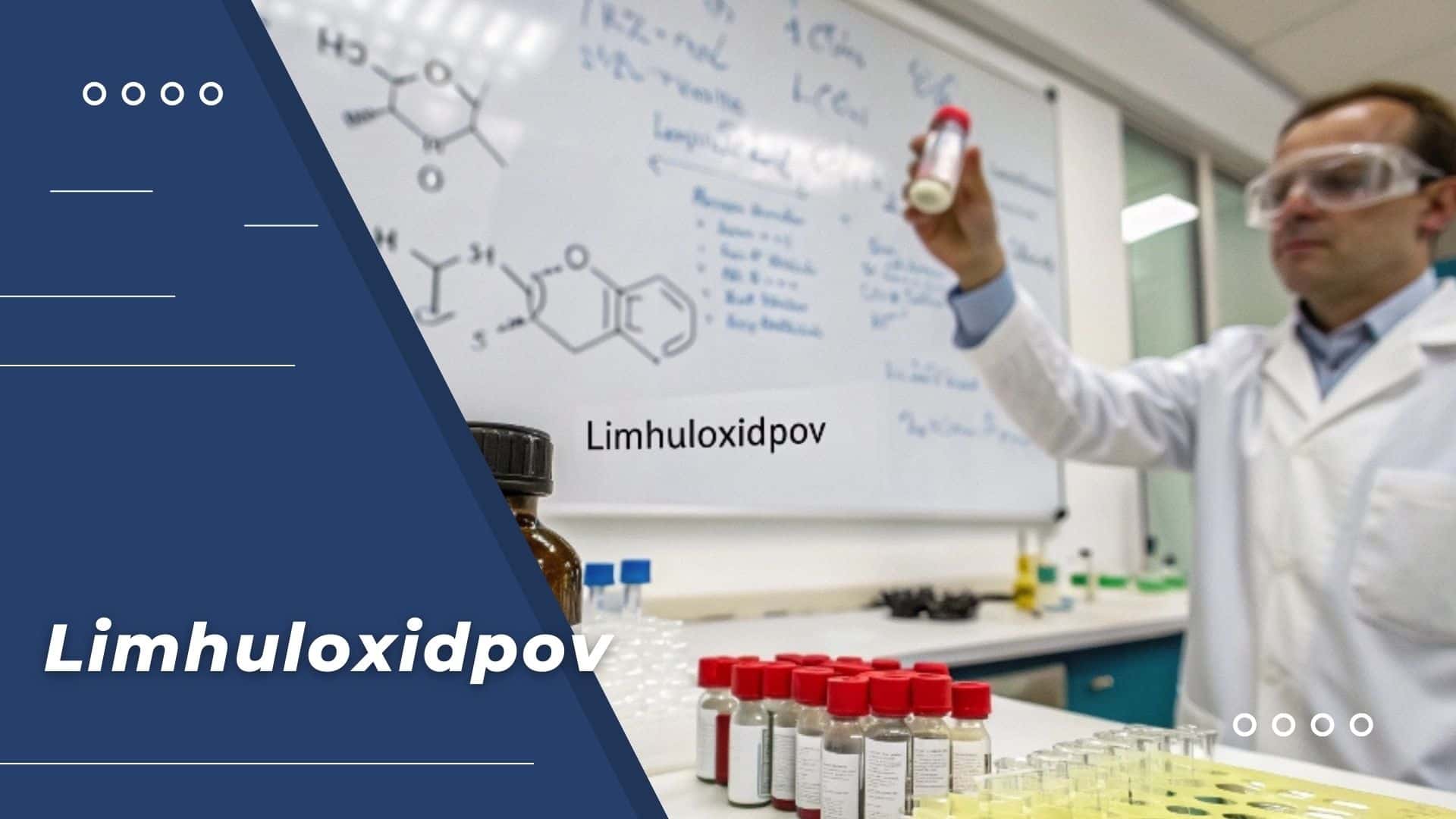In the constantly evolving world of medicine, new breakthroughs often bring hope for treating complex conditions in ways we never thought possible. One such breakthrough gaining attention in the field of neurological treatment is limhuloxidpov. This innovative compound combines the proven effectiveness of traditional pharmaceuticals with advanced molecular stability, offering new possibilities for treating brain-related disorders.
Its potential to transform how we approach neurological diseases has caught the attention of both healthcare professionals and patients. In this article, we’ll explore how limhuloxidpov works, its benefits, and why it’s generating so much excitement in the medical community. Let’s take a closer look at what makes this compound so special.
What Is Limhuloxidpov?
At its core, limhuloxidpov is a synthetic biochemical compound that’s been specially designed for treating neurological conditions. The real breakthrough with limhuloxidpov lies in its ability to target specific receptors in the brain while crossing the blood-brain barrier—something that many traditional treatments struggle with.

In simpler terms, it’s a drug that’s designed to reach the brain with a precision and efficiency that wasn’t possible with earlier medications. And that’s exactly what makes limhuloxidpov so revolutionary.
The History Of Limhuloxidpov’s Development – How It Revolutionized Neurological Care!
The development of limhuloxidpov wasn’t an overnight success. It’s the result of years of dedicated research and collaboration among some of the brightest minds in biochemistry. The journey began back in 2015, when scientists at the Cambridge Biochemical Institute first synthesized the compound.
Following that, 2017 marked a significant step forward with the optimization of the compound’s structure, aided by computational modeling to enhance its stability. By 2019, limhuloxidpov had completed preclinical trials, and its results were so promising that it moved on to human clinical trials in 2020. Today, it’s one of the most exciting developments in the field of neurological treatment.
Chemical Structure And Properties Of Limhuloxidpov – The Key To Its Powerful Effects!
Understanding how limhuloxidpov works requires a closer look at its molecular structure. The compound is carefully engineered to ensure maximum effectiveness in treating neurological conditions.
Molecular Structure:
At the core of limhuloxidpov is a modified peptide backbone, designed specifically to offer stability and the ability to cross the blood-brain barrier. The structure features three key components:
- Lipophilic Core Structure: Comprising 15 carbon atoms, this core is essential for the compound’s ability to cross the blood-brain barrier.
- Hydroxyl-Terminated Side Chains: These side chains enhance the solubility of limhuloxidpov, ensuring that it can be absorbed and distributed effectively throughout the body.
- Specialized Binding Domain: This part of the molecule selectively binds to receptors in the brain, making limhuloxidpov highly targeted in its action.
Key Physical Properties:
When it comes to pharmaceutical compounds, stability is key. Here are some of the essential properties of limhuloxidpov that make it so effective:
| Property | Value |
|---|---|
| Molecular Weight | 487.6 g/mol |
| Solubility | 12.3 mg/mL in water |
| Half-life | 24-36 hours |
| Bioavailability | 85% |
| pH Stability Range | 5.5-8.0 |
These properties contribute to limhuloxidpov‘s ability to remain effective over an extended period with fewer doses, making it convenient and efficient for patients.
How Limhuloxidpov Works In The Body?
To truly appreciate the power of limhuloxidpov, we need to understand how it functions within the body. The compound works through a sophisticated biochemical cascade, interacting with specific neurological receptors in the brain. Here’s a closer look at the process:

Mechanism of Action:
Once inside the body, limhuloxidpov targets G-protein coupled receptors (GPCRs) on neurons in the brain. This interaction triggers several key processes:
- Activation of Calcium-Dependent Protein Kinases: These enzymes play a crucial role in neural signal modulation, which helps improve brain function.
- Increased Brain-Derived Neurotrophic Factor (BDNF) Expression: BDNF is vital for synaptic plasticity, which is the ability of the brain to reorganize itself, learning, and memory.
- Regulation of Neurotransmitter Release: By modifying ion channels, limhuloxidpov controls the release of neurotransmitters, enhancing communication between neurons.
What’s particularly exciting is that limhuloxidpov selectively binds to these receptors, which means it targets the brain directly, minimizing the risk of side effects that are often seen with traditional treatments.
Metabolic Pathways and Elimination:
After limhuloxidpov enters the body, it undergoes a specific metabolic process, allowing it to work effectively over time. The drug moves through three phases:
- Phase I (Hydroxylation): Taking about 4-6 hours, this phase involves enzymes like CYP3A4 and CYP2D6.
- Phase II (Conjugation): In this phase, which lasts 8-12 hours, enzymes like UGT1A1 and SULT1A1 help in preparing the compound for excretion.
- Phase III (Excretion): Over the next 12-16 hours, limhuloxidpov is excreted through P-glycoprotein.
During these phases, the drug is broken down into active metabolites, each contributing to the extended duration of action and the enhanced ability to cross the blood-brain barrier.
What Are The Clinical Applications Of Limhuloxidpov?
Limhuloxidpov has shown great promise in treating a variety of neurological disorders, particularly neurodegenerative diseases like Parkinson’s and Alzheimer’s. Its ability to cross the blood-brain barrier efficiently makes it highly effective for conditions that affect the brain. In clinical settings, it has been used as a first-line treatment for moderate to severe cases, offering fast results with fewer side effects compared to traditional medications.
Additionally, limhuloxidpov is often combined with other treatments, providing more comprehensive care for patients with complex neurological conditions. As research continues, we may see even broader applications for this innovative drug.
What Are The Different Treatment Phases For Limhuloxidpov?
The treatment with limhuloxidpov is structured into three distinct phases to ensure that the patient receives the optimal care throughout their journey:
- Initiation (2 weeks): During this phase, patients are closely monitored to assess how they are responding to the medication. Assessments are made every 3 days to ensure the drug is having the desired effect and to address any early issues that may arise.
- Stabilization (4-6 weeks): Once the initial phase is complete, patients enter the stabilization phase, where monitoring shifts to weekly check-ins. The goal during this time is to adjust the treatment if necessary and ensure that the patient is maintaining progress.
- Maintenance (6-12 months): In this final phase, the focus shifts to long-term management. Patients undergo monthly evaluations to track their condition and make any adjustments to the treatment plan as needed to maintain the therapeutic benefits of limhuloxidpov.
These phases work together to create a comprehensive treatment plan that adapts to the patient’s needs over time.
The Key Benefits Of Limhuloxidpov – Need To Know!
There’s no denying that limhuloxidpov offers numerous advantages over traditional neurological treatments. Let’s take a closer look at some of the biggest benefits it brings to the table.
Clinical Efficacy:
Limhuloxidpov works quickly and effectively. While conventional treatments for neurological disorders can take 2-3 weeks to show results, limhuloxidpov has been proven to produce therapeutic effects within just 72 hours. It also reduces symptom severity by 78% in patients.
Safety Profile:
Another major advantage of limhuloxidpov is its safety profile. Clinical trials have shown that the drug causes 65% fewer side effects than traditional medications. Plus, because of its selective metabolic pathways, limhuloxidpov interacts minimally with other drugs, reducing the risk of harmful drug interactions.
Patient Outcomes:
Patients who use limhuloxidpov report significant improvements in their quality of life, with 82% of patients seeing a noticeable difference. The adherence rate for the treatment is also high—94% of patients continue the regimen as prescribed, which is a strong indicator of how well it works for most people.
Economic Benefits:
Cost-wise, limhuloxidpov is a winner. By reducing hospital admissions by 65% and emergency care visits by 58%, it helps cut down on long-term care needs. The need for frequent hospital visits is greatly minimized, making it an economically viable option for both patients and healthcare systems.
Side Effects And Safety Considerations – Is It Safe For You!
While Limhuloxidpov has proven highly effective, it’s not without some potential side effects. However, its safety profile remains one of its strongest features, with far fewer adverse reactions compared to older neurological treatments.
Common Side Effects:
The most commonly reported side effects are:
- Mild Headaches (8% of patients)
- Dizziness during the first few days of dose adjustment (6%)
- Gastrointestinal Discomfort (5%)
- Sleep Pattern Disruptions (4%)
These side effects tend to be mild and usually resolve after a short period, especially during the initial phase of treatment.
Serious Adverse Events:
More severe side effects are rare, with only 0.3% of patients experiencing serious adverse events. Discontinuation rates are also low, at just 2.1%, highlighting the drug’s favorable safety profile.
Contraindications and Drug Interactions:
There are certain contraindications and drug interactions that healthcare providers must be aware of:
- Severe Hepatic Impairment: Limhuloxidpov should not be used in patients with severe liver dysfunction.
- MAO Inhibitors: The compound should not be co-administered with MAO inhibitors, as this could increase the risk of serotonin syndrome, a potentially life-threatening condition.
Additionally, it’s important to monitor for potential interactions with CYP3A4 inducers, CYP2D6 inhibitors, and other medications that could affect Limhuloxidpov’s efficacy or safety.
The Future of Limhuloxidpov – Expanding its Applications!
Limhuloxidpov is still in the early stages of its clinical journey, but its potential applications are vast. Ongoing research is focusing on:

- New Formulations: In the future, Limhuloxidpov may be available in alternative formulations, such as injectables or inhalable forms, to cater to patients with different needs.
- Expanding its Use in Other Neurological Disorders: Beyond Parkinson’s and Alzheimer’s disease, researchers are investigating its effectiveness in treating conditions like epilepsy, stroke recovery, and traumatic brain injuries.
- Personalized Treatment Plans: As research advances, Limhuloxidpov may become part of more personalized medicine approaches, with doctors tailoring treatment based on a patient’s genetic profile and specific condition.
FAQs:
How long does it take for Limhuloxidpov to show results?
Patients often begin experiencing therapeutic effects within 72 hours of starting treatment. This quick onset makes it more effective than traditional medications, which can take up to 2-3 weeks for noticeable improvements.
Is Limhuloxidpov safe for long-term use?
Yes, Limhuloxidpov has a favorable safety profile with fewer adverse effects than conventional treatments. Clinical trials indicate that the compound remains safe for long-term use with regular monitoring. It has shown minimal toxicity over extended treatment periods.
Can Limhuloxidpov be combined with other medications?
Yes, but it is important to follow a structured approach. A 7-day washout period is recommended when combining Limhuloxidpov with other drugs to avoid potential drug interactions. Always consult a healthcare provider for specific guidance.
What makes Limhuloxidpov different from other neurological drugs?
Limhuloxidpov stands out because it efficiently crosses the blood-brain barrier, ensuring targeted drug delivery. It also has a unique molecular structure that enhances stability and reduces side effects compared to traditional treatments. This results in more effective and safer therapy for patients.
Are there any contraindications for using Limhuloxidpov?
Limhuloxidpov should not be used in patients with severe liver impairment or those taking MAO inhibitors. It also requires dose adjustments for patients with renal impairments or low creatinine clearance. Always inform your healthcare provider of other medications you are taking.
Conclusion:
Limhuloxidpov represents a major advancement in the treatment of neurological disorders. Its ability to cross the blood-brain barrier efficiently and target specific receptors makes it a powerful tool for conditions like Parkinson’s and Alzheimer’s. With fewer side effects and a quicker therapeutic response than traditional medications, it offers hope for patients seeking better treatment options.
The compound’s stability and long-term safety make it a promising choice for chronic conditions. Limhuloxidpov may unlock even more potential for improving brain health as research continues.
Also Read:




